Armored car "Type 92" / "Sumida" (Japan)
The program for developing new armored cars was directly linked to the plans of the Japanese authorities, which envisaged the seizure of large areas of continental Asia. To combat the local armies, the Japanese armed forces required various types of equipment, primarily light armored vehicles with machine guns. For objective reasons, even such equipment could give the Japanese army a serious advantage over the enemy.
In the 1930-31 years, the marines of the Japanese Imperial Navy showed interest in the subject of armored vehicles. It was obvious that she would have to participate in some future operations, and therefore she also needed her own armored vehicles. The result was the appearance of an order for a specialized combat armored vehicle. It is curious that the requirements of the marines almost did not differ from the requirements of the army, however, it did not purchase the existing armored cars created for the ground forces.
Proceeding from those or other considerations, apparently related to the competition of different types of troops, the command of the Marine Corps ordered the development of its own project. The work was chosen by the Tokyo Automobile Plant Ishikawajima, which produced trucks under the Suida brand, as well as armored cars of the same name for the army. Subsequently, this choice of contractor was reflected in one of the project titles. Produce serial equipment had organization organization.
It should be noted that the armored vehicle to support amphibious landings currently carries several names simultaneously, which leads to undesirable confusion. It is designated as "Type 92", "Type 2592" or "Type 93". In addition, the names “Sumida”, “Kokusan” and “Hokoku-Goo” are applied to the car. It is very likely that the designation “Type 93” is not true, since An armored car was put into service and sent into battle in the 2592 year according to the Japanese calendar. The names "Kokusan" and "Hokoku-Go" are also dubious. Most likely, the armored car was called "Type 92" or "Sumida".
Despite its purpose, a promising armored vehicle for the marines should not be seriously different from the "land" machines. The customer wanted to get a wheeled combat vehicle without the possibility of swimming and crossing deep fords. At the same time, it was necessary to ensure a sufficiently high permeability on land. The hull was supposed to protect the crew from bullets and shrapnel. It was proposed to equip an armored car with several machine guns capable of simultaneously attacking targets in different directions.
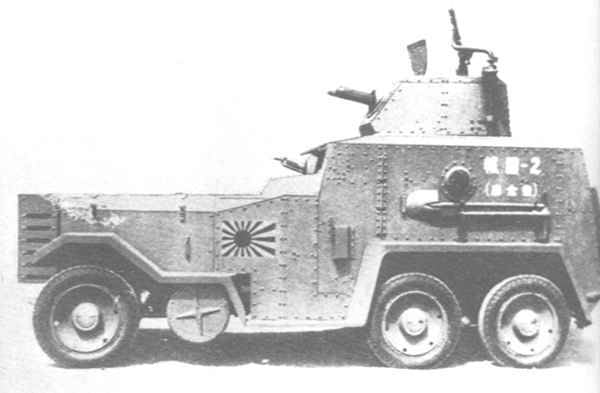
Side view. Photos of Tanks-encyclopedia.com
According to reports, the new armored vehicle once again decided to build on the basis of the existing truck chassis. According to some sources, the base for the “Type 92” was a three-axle non-wheel-drive chassis from Ford, produced under a license under the “Sumida” brand name. All units of such a chassis were assembled on a single metal frame, in front of which was placed the power plant. The car was completed with a petrol engine with a power of 85 hp. and a mechanical transmission that transmitted torque to the two rear driving axles.
The undercarriage for the armored car was not particularly complex. It consisted of a front axle with steered wheels and a two-axle rear trolley with power distribution tools. Applied dependent suspension based on leaf springs. All wheels instead of spokes received metal wheels. Only single-pitch wheels of the required size were used. On top of the wheels were covered with curved plate wings. In this case, the wing of the rear wheels was partially recessed into the armored hull.
A characteristic feature of the involved chassis was a significant distance between the front and middle axles, because of which the car risked to sit down even on a low hummock. To solve this problem behind the front wheels on the frame fixed metal discs. On difficult terrain, these devices were supposed to perform the functions of additional wheels.
Some sources mention the possibility of using "Sumida" on railways. In this case, it was necessary to replace the wheels or remove from the existing rubber tires. After such a refinement, the armored car could play the role of armored rubber. This information does not seem to correspond to reality. No good evidence of such opportunities. In addition, such information is not even indirectly supported by the available information about the project.
It is known that the armored car "Type 92" received a body with different thickness of individual parts. The front parts of the hull were proposed to be made of 11-mm armor, others - of metal with a thickness of at least 4 mm. The armor plates during assembly were fixed on the frame of metal profiles. As in other projects, the hull had a bonnet layout with the placement of all crew jobs in the general habitable compartment.
The engine compartment of the body was covered with a simple-shaped hood. Front radiator and engine defended curved grille, divided into two halves. Outside the combat situation, half of the grid was opened to the sides, providing a more efficient cooling of the power plant. In battle, the air entered the radiator through the existing slots. Used diverging sides. From above, the engine was covered with a triangular roof with a set of hatches for access inside.
Behind the wide part of the hood were located the frontal details of the habitable compartment. A sloping frontal sheet connected to the hood from above, with vertical sides at the side. To simplify the design, the vertical side plates of the hull were installed in one line, forming a flat structure. Because of this, in the stern of the boards had to provide cuts, which played the role of wheel arches. Behind the crew defended oblique rectangular armor. The hull received a roof of unusual design. It was made in the form of a truncated pyramid of small height with a rectangular base. Upstairs on it provided a place for the installation of the tower. The roof of a special form protected an armored vehicle from grenades. The ammunition simply rolled off the armored car and exploded at the level of a relatively thick side, but not on a thin roof.
An original tower was developed, consisting of a wedge-shaped forehead and a horseshoe-shaped back. Curved parts served as the sides and the stern. Above the tower was covered with a horizontal roof with a hatch. In a large front sheet provided an opening for the ball mounting machine gun.
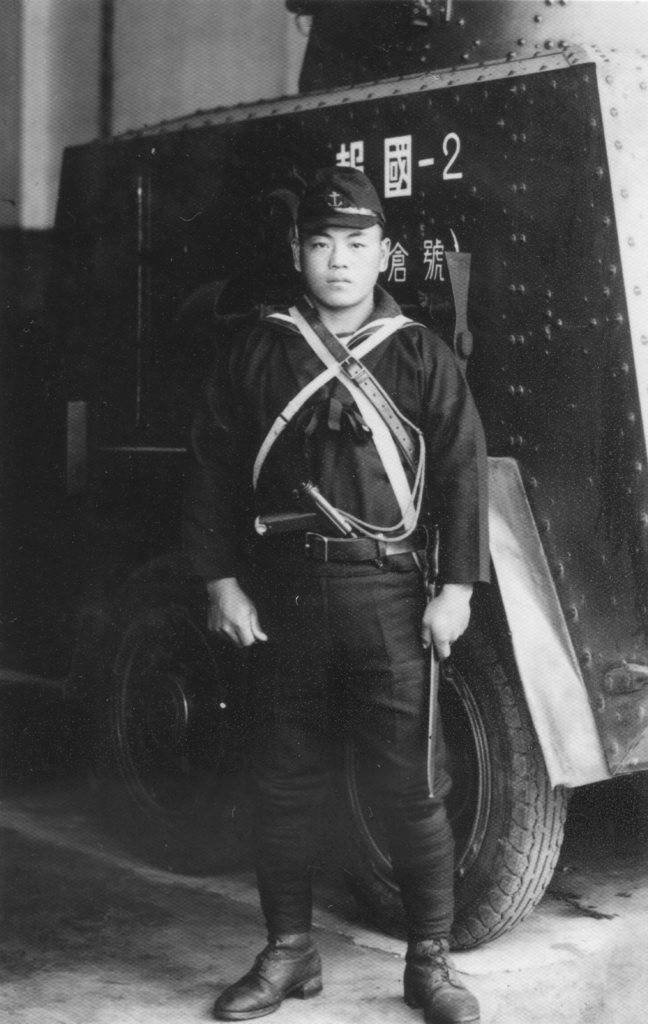
Soldier on the background of "Sumida". Photo Forum.warthunder.com
The main objective of the prospective armored car "Type 92" / "Sumida" was the fire support of the upcoming landing. Such customer requirements were fulfilled in the most original way. The armored car immediately received five rifle-caliber machine guns. The main weaponscharacterized by higher performance and increased guidance angles, was a Vickers machine gun caliber 7,7 mm. Such a machine gun, which had a water-cooled barrel, was placed in a frontal turret installation. Swivel tower provided a circular vertical guidance with precise guidance due to the ball mount.
"Vikkers" supplemented with four newest machine guns "Type 91" caliber 6,5 mm. The first of them was located on the ball mount on the right side of the frontal body forehead. Two more installed in similar systems in the center of the sides. The pivot set for the fourth machine gun was located in the left rear of the tower. To use it, the arrow should have protruded from the hatch.
Turret machine gun used tape power. Other weapons were stocked with bunker shops. Tapes and boxes with cartridges of two types were placed in the free volumes of the case. The total ammunition of five machine guns consisted of several thousand cartridges. Placing three machine guns in the hull and two on the turret allowed the crew to simultaneously fire several targets in different directions. At the same time, the construction of tower installations allowed for fire with large pointing angles, which could be useful in some situations.
To manage the armored car for the Marine Corps should have a crew of several people. Different sources provide information on the crew size from four to six people. It should have included a driver, a commander and several shooters. It can be assumed that the number of shooters did not equal the number of machine guns, although the possibility of reinforcing the crew with additional members cannot be ruled out. However, in this case, the armored car could do with one driver and five arrows.
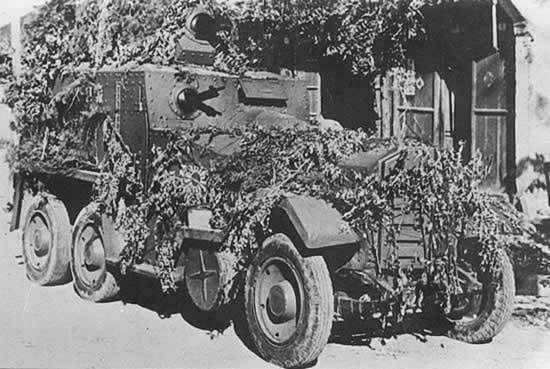
Armored car "Type 92" with disguise. Photo Aviarmor.net
Access to the car was provided by a set of doors and hatches. In front of the habitable compartment, at the level of the control room, there were side doors that open by turning back. Another door was fixed on the stern sheet. The roof of the tower had its own hatch. The driver had to watch the road with a pair of hatches in the front plate. During the battle, they should be closed with armored covers with viewing slots. Also, a pair of hatches was in the upper part of the side doors. The fighting compartment had no separate means of observation. Arrows could only search for targets using standard weapons of their own.
According to known data, the armored "Type 92" had a length of about 4,8-5 m with a width of no more than 1,8-1,9 m and height up to 2,3 m. The combat weight reached 6,8 tons. per ton car could show acceptable performance. Moreover, according to some data, an armored vehicle for the marines could have outstanding characteristics. Thus, some sources mention the maximum speed on the highway at the level of 12,5 km / h. Is it true to say difficult, although there are grounds for doubt. The presence of additional wheels made it possible to a certain extent to improve the permeability on difficult landscapes, but the real characteristics of the chassis were limited by the lack of all-wheel drive and civilian origin.
It is known that the first armored vehicles "Type 2592" / "Sumida" were built no later than the end of 1931 or the beginning of 1932 of the year. Apparently, a small batch of such machines was built, which was immediately transferred to the customer. This may explain the fact that the new armored vehicles were able to take part in the First Shanghai Battle, which began at the end of January 1932.
After an air strike on Chinese objects carried out by deck aircraft, Japan set about landing an amphibious assault force. About 3 thousand Japanese soldiers and a certain amount of equipment landed on the coast of Shanghai. According to various sources, fire support for the advancing group was provided by armored vehicles "Type 92". Their crews coped with the mission and helped the marines to capture the designated objects. Subsequently, until the end of the Shanghai War, armored cars were used to patrol and solve other ground missions.
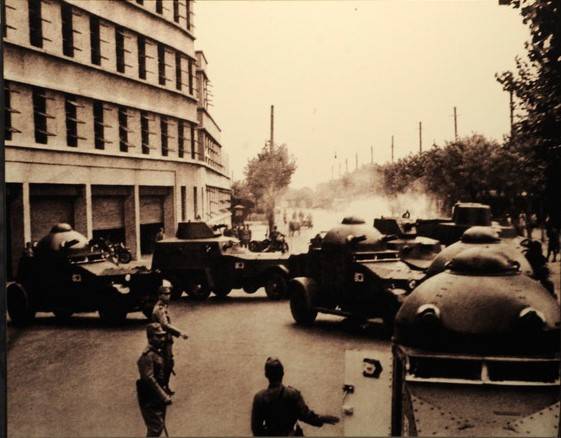
Armored cars of Japan in Shanghai. Second from left - "Type 92" / "Sumida". 10 August 1937 g. Photo by Wikimedia Commons
According to various sources, no more than five Sumida-class armored vehicles were attracted to the battles in Shanghai. Probably, such a small amount of equipment that participated in the battles, was associated with a limited rate of mass production. By the outbreak of hostilities, the Ishikawajima automobile plant could simply not have time to build a larger number of armored vehicles. In the future, the production of such equipment could continue.
The exact number of built armored vehicles "Type 92" is unknown. Different sources provide a variety of estimates and assumptions. According to some materials on the project, only five cars were assembled, while the others talk about five hundred. There are less bold estimates - no more than 100 units. Available information on the armored vehicles construction program and subsequent battles suggest that the marines received at least several dozen Sumida vehicles, but no more than a hundred.
Regardless of their number, Marine Corps "Type 92" / "Sumida" armored vehicles were actively used for a certain time. It should be noted that they no longer had to solve their original tasks. New amphibious operations were not carried out, because of which the "sea" armored cars were used exclusively on land, together with other equipment of its class. They were attracted to patrolling settlements and country roads, to conducting police operations, etc.
In this role, the 92 Type machines served over the next few years. In the second half of the thirties, Japan launched the production of several new armored combat vehicles of various classes. Some of them could replace the obsolete armored cars of the old types. Apparently, the Sumida Marine Corps over time were written off and dismantled, and their place was taken by a newer vehicle. Most likely, all such armored vehicles were decommissioned before the beginning of World War II. None of these armored cars have been preserved.
Planning the seizure of Chinese territories, the Japanese armed forces built new equipment for various purposes. Among other samples was created armored "Type 92" / "Sumida", intended for fire support of amphibious assault forces. However, serial machines had to play their main role only once. In the future, this technique served as the usual "land" armored cars. Obviously, the imperial navy’s marines could use similarly any other existing armored car. However, her command wanted to order their own combat vehicles, which led to very interesting results.
Based on:
http://tanks-encyclopedia.com/
https://militaryfactory.com/
http://aviarmor.net/
Fedoseev S. Armor of Japan 1939-1945 // Technique for Youth Magazine Library. - M .: "Eastern Horizon", 2003.
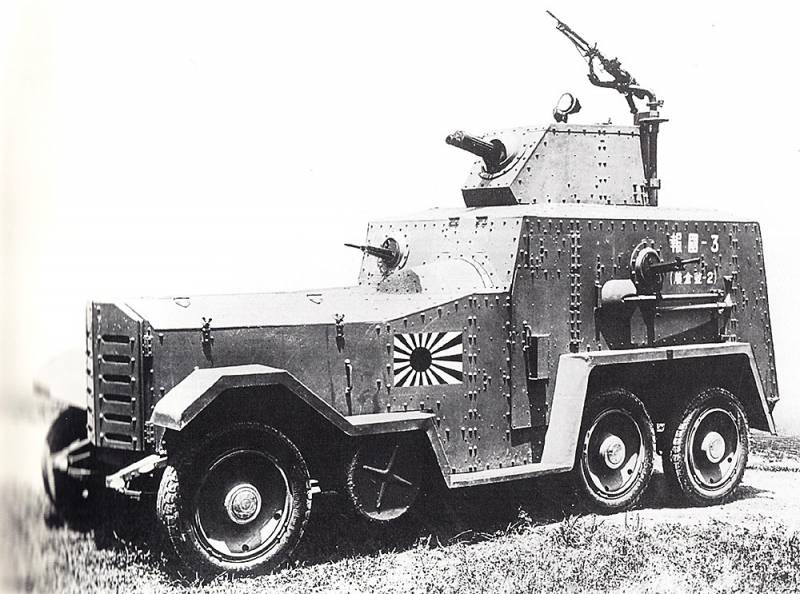
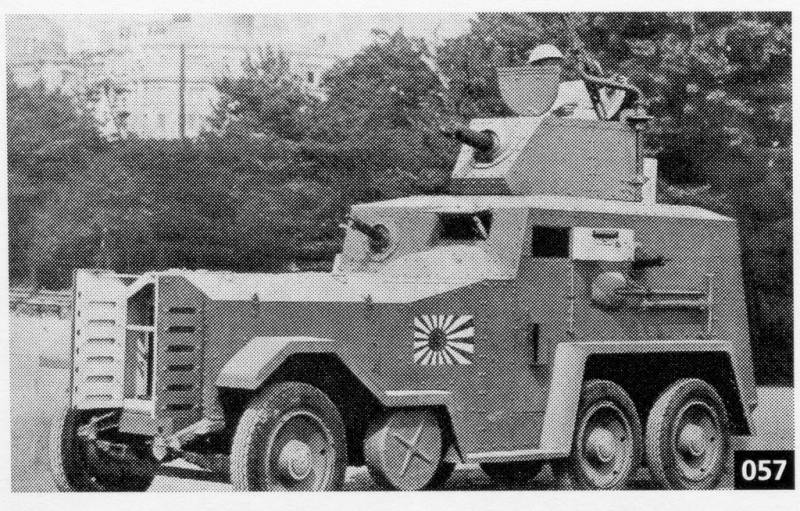
Information